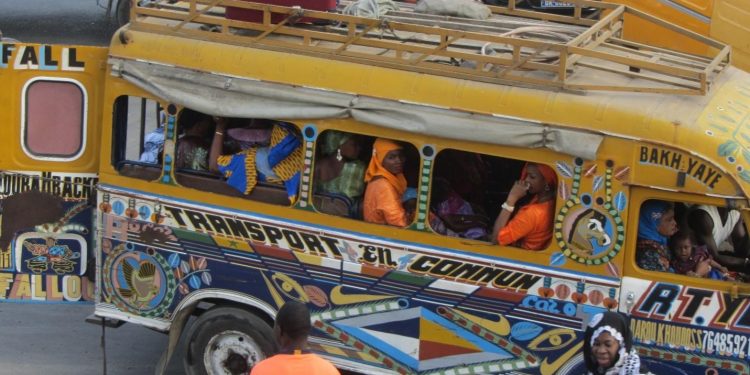Senegal, a country known for its vibrant culture and unique transportation system, is undergoing a significant change that will impact its streets and cultural heritage.
The iconic « Cars Rapide, » colorful minibusses that have been a staple of Senegalese urban life for decades, are parked permanently. This transformation signals a shift in transportation dynamics and raises questions about preserving cultural traditions.
We explore the history of Cars Rapide, the reasons behind this decision, its implications for Senegal’s transportation landscape, and the cultural significance of this move.
The History of Cars Rapide
Cars Rapide, derived from the French word for « fast, » has been integral to Senegal’s public transportation system since the 1970s. These brightly decorated mini buses, often adorned with colorful paintings and proverbs, have provided an affordable and accessible means of transport for millions of Senegalese citizens. They were a mode of transportation and a canvas for artistic expression and cultural identity.
Reasons for Permanent Parking
While Cars Rapide has symbolized Senegal’s cultural richness, they have also faced numerous challenges over the years. Safety concerns, including accidents and poor maintenance, have raised eyebrows. Additionally, congestion and traffic issues in Senegal’s urban areas have grown significantly, partly due to the proliferation of these minibosses. The Senegalese government has decided to park the Cars Rapide to address these concerns permanently.
Impact on Transportation Landscape
The decision to park Cars Rapide permanently will undoubtedly significantly impact Senegal’s transportation landscape. With these minibosses off the road, the government must provide alternative modes of public transportation to ensure that citizens can still move around efficiently. This transition presents an opportunity to modernize and streamline the country’s transport system while addressing safety concerns and reducing traffic congestion.
Preservation of Cultural Traditions
While the decision to park Cars Rapide addresses pressing safety and traffic issues, it also raises questions about preserving Senegal’s cultural traditions. These minibusses were not just vehicles; they were a canvas for local artists to showcase their talents and represent Senegal’s vibrant culture. Preserving this cultural heritage should be a priority as the country moves towards a more modern and efficient transportation system.
Conclusion
Senegal’s decision to permanently park the colorful Cars Rapide minibusses marks a significant turning point in the country’s transportation history. While addressing safety and congestion concerns is essential, preserving Senegal’s rich cultural heritage is equally important. As the country moves towards a more modern transportation system, it should find ways to incorporate elements of its unique culture and art into the new mode of public transportation.







